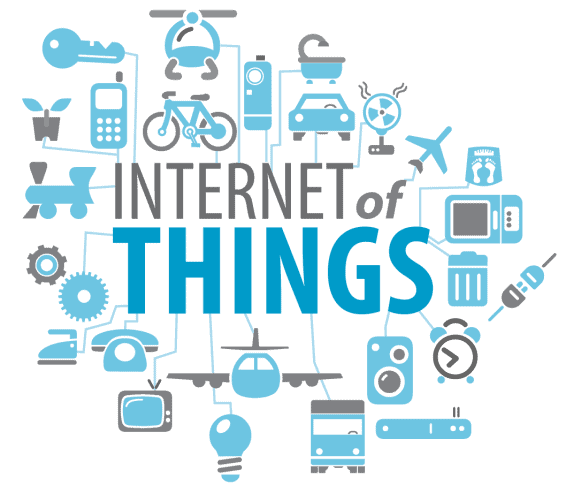
Imagine as you wake up and head for the bathroom, where you step onto the inbuilt scale in the bathroom floor and it monitors your health parameters like stress, heart rate, and weight and compares it against your goals. Then as you are brushing away to those perfect pearly whites, your brush checks the oral health and reminds you about the spot that you missed. All this data, gathered and systematically ordered in the wall mounted electronic hub in your home.
Now wake up for real, for this is no dream but the reality of the 21st century. The Internet of things has arrived and is here to stay. A total of around 10 billion devices were connected to the internet in 2015 and this number is projected to reach 34 billion devices by 2020. It is estimated that IoT devices will make up around 24 of the 34 billion, while conventional computing devices like computers, smartphones, tablets, etc, will comprise the rest 10 billion.
What is IOT?
The Internet of Things (IoT) is exactly as it sounds. It is things/devices or products, which have inbuilt electronics say sensors in them working in tandem with software, collecting and exchanging data by communicating with each other over a network (The internet). When we say things, they could be from as small as a button to as large as a building.

This image represents the environment of the Internet of Things. Source: businessinsider.com
⦁ The IoT devices would be present in multiple locations gathering data.
⦁ They would be coordinating with each other while connected together through a common network.
⦁ The gathered data would be sent back via the network to the Cloud or Data Storage or to a remote ( Computer, smartphone etc.) .
⦁ This data would be crunched and analyzed using algorithms for that purpose.
The integration of these devices with the internet points to the use of IP addresses as a means of unique identification. There is a problem here though in the form of the limited address space of IPv4 (4.3 billion distinctive addresses). Devices in the IoT will have to use IPv6 to accommodate the extremely large address space required. The IoT revolution will not made possible without the assistance of IPv6 and would be dependent to a large extent on the global adoption of this protocol.
How was IOT conceptualised?
The idea of smart devices in a network was thought of as early as 1982. Carnegie Mellon University had the distinction of harbouring the first appliance to be connected with a network. It was a Coke machine with the ability to report its contents and tell if the drinks that were just loaded were cold or not.
However it wasn’t until 1999 that IoT as a concept gained popularity. This was in-part due to the Auto-ID Center at MIT. Its founder Kevin Ashton saw RFID as a requirement for IoT. The thinking behind it was that if devices were equipped with identifiers, computers could inventory and manage them. This notion of devices with identifiers is one of the central features of Internet of Things.

The horizons stretching before IoT
The early analysis of the various possibilities of IoT are staggering. From a report in Business Insider (BI) on the Internet of Things, we gain few key insights :

Source: businessinsider.com
Around $6 Trillion expenditure will occur over IoT platform within 5 years from now.
The investments in infrastructure of IoT will be in six key areas :
- Connectivity
- Security
- Data Storage
- System Integration
- Device Hardware
- Application Development
The biggest adopters of the IoT platform will be
- Businesses, followed by
- Governments, followed by
- Consumers
The total return on investments (RoI) by IoT is estimated to generate a whopping $13 trillion by 2025.
Safety and Security Concerns
With such staggering numbers predicted for IoT adoption in the coming years, the issue of the importance attached to safety and security becomes easily apparent. The vast amounts of data on people that will be collected by IoT devices would benefit from being regulated by a comprehensive policy on data collection, it’s usage and privacy.
In a survey conducted by Business Insider (BI) Intelligence, 39% of the responses were related to the security concerns of adopting IoT. These security concerns won’t just be virtual but physical as well.
⦁ IoT Devices controlling onboard systems in automobiles like automatic braking, horn, etc have been shown to be vulnerable to remote exploitation.
⦁ In 2008 cybersecurity researchers had demonstrated the ability to gain access and control pacemakers without authority.
As a response to these security concerns the Internet of Things Security Foundation (IoTSF) was launched on 23 September 2015. It is an international collaborative and vendor-neutral initiative led by technology providers and telecommunications companies including the likes of BT, Vodafone and Imagination Technologies.The mission of IoTSF is to promote knowledge on the best practises to be followed when dealing with the Internet of Things.
In the US, the Federal Trade Commission expressed its opinion that the protection surrounding devices, i.e. security and shielding of privacy have to be integrated at the very beginning itself than as an afterthought. It recommended that data minimization ought to be followed which would prevent firms from keeping any data beyond what they need. The necessity for data anonymization was also put forth so that, data could never be used to link back to specific individuals.
Although this is a good start, there’s still a lot of ground to be covered to fully protect the privacy and security surrounding new devices.
5 IoT Devices and Their Applications
Let’s take a look at some of the top Internet of Things devices along with their applications. Here we examine 5 Internet of Things products that have the word ‘smart’ written all over them!
1. Mother from Sen.se

Image Source : Staticworld.net
Mother is a Russian doll-like device which comes along with four sensors called cookies. It’s used to remotely monitor and collect data via the connected sensors for which it acts as a central hub. An ethernet cable is plugged into the device and the sensors are placed on objects that we want to monitor. A monitoring app is chosen for that particular sensor. The sensor monitors the parameter specified in the app with respect to the object that it is clipped on. Once the information is collected, it is transferred via the home network to Mother which stores the information, sends it to the cloud to be crunched using the latest data analytics and big data methods and send the result back in the form of graphic charts to the senseboard.
Senseboard is a dashboard for mother and it’s cookies, which can be accessed via the browser. The functionality of each cookie can be changed from the senseboard by selecting another app for it. With application from healthcare to entertainment, it’s applications are many. The popular apps that Mother supports are Walk, Coffee, Presence, Teeth, Door, Sleep, etc. These apps can let you measure the distance you’ve walked or jogged, take a count of family members who are at home, sense the temperature of the home environment and provide alerts if it is more or less than specified levels, tell you about your sleeping patterns, etc. The remarkable thing about these sensors is that they provide a smart environment for the home through ubiquitous sensing, i.e., by way of wireless sensor networks. They can communicate with mother and also among each other using the 915 Mhz and 868 Mhz frequency bands. The Device was debuted at CES 2014 where it was chosen as an honoree of 2014 CES Innovations Design and Engineering Awards.
2. Neurio Home Intelligence
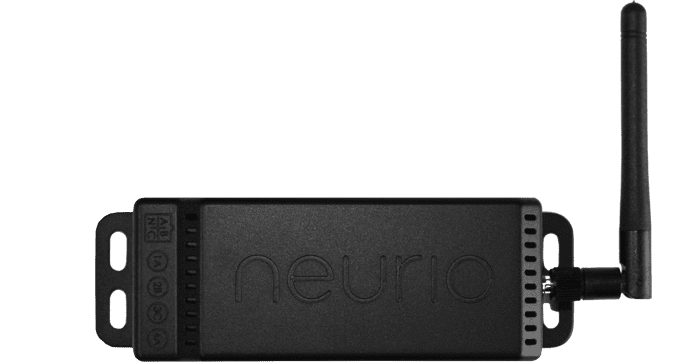
Image Source : techspot.com
Neurio, as you can see above, is a small rectangular black box, that is designed to be integrated into your home’s electric board. This home intelligence system strives to make your home more efficient by providing a means of monitoring your electricity consumption activities. Another aim of Neurio is to integrate smoothly with home automation systems present in the market. One among the several companies trying to become a market leader in this area, the advantage that Neurio has over the other systems is that there is no need to install sensors on individual appliances. After its installation to the electric board, a Wi-Fi enabled power sensor sends data regarding electricity usage to Neurio via cloud computing, where it is analyzed by the company’s algorithms to produce meaningful results. The results will be represented in the form of a real-time graph showing your home’s electricity usage. Per hour cost of various appliances and their individual usage can also be seen. This provides a means of research and identification of the heavy power users and moderating their usage. Also, if you are outside your home, and say an appliance like the oven is switched on, the app has provisions for sending push notifications to your mobile as an alert. Neurio has apps in both the Android Marketplace and Apple App Store.
3. RaspiTrap
When you think of mouse traps, the image that might come to your mind first would be something like this.

Image Source : 1.bp.blogspot.com
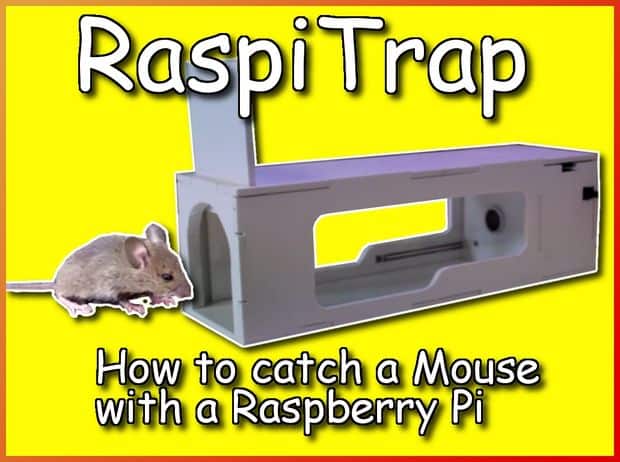
Well we don’t blame you. “Tom and Jerry” was a favourite show of ours too. However, mouse traps need not be so cruel. There are Humane ways of catching the critters who rifle through our kitchen at night. Born out of this altruistic idea, a slice of Raspberry pi, some IR sensor flavouring and a little Wi-Fi magic comes RaspiTrap, a Raspberry pi based project and a DIY IoT device.Image Source : Cdn.instructables.com
It’s construction and working is easily explained. The frame is made from PVC sheets of 5mm thickness and cut to shape using predetermined CAD designs. RaspiTrap is split into two sections, one for the onboard electronics and the other for serving as a temporary home for our unintended mouse guest. The electronics consist of a Raspberry Pi development board with Arch Linux, a PCB for the IR barrier and a servo motor for the Pi camera module. A Wi-Fi dongle connects it all to a wireless home network. When the mouse ventures into RaspiTrap, it breaks the IR beam. This results in the servo pulling the pin holding the trap door up. Once the mouse is caught, an LED comes to life illuminating the inside of the trap and the Pi camera takes a photo of the new prisoner. This picture is then sent via email to a predetermined account. Thus, you get an update instantly and can hasten to release it somewhere far away where hopefully nobody tells the mouse the directions to your house!
4. August Smart Lock
With August SmartLock, you can convert your smartphone into a smart key. This innovative lock with a novel design aims to serve as a smart lock for your home. The lock is connected to your home network and can interact through both Wi-Fi and Bluetooth. Examples of its use are that it can unlock and lock your door as you enter and leave, Create virtual keys which can be shared with guests, so that they can let themselves in without your assistance. It also gives you a report of who enters and exits your home. No more do you have to double and triple check to see if your door is locked. August SmartLock comes with an optional accessory which can help you open and lock your doors remotely. So that’s 10 points to safety! The icing on the cake is that you don’t need any extra hardware to control and monitor the lock. Your smartphone is more than enough for the task, i.e., if it is Android or iOS.
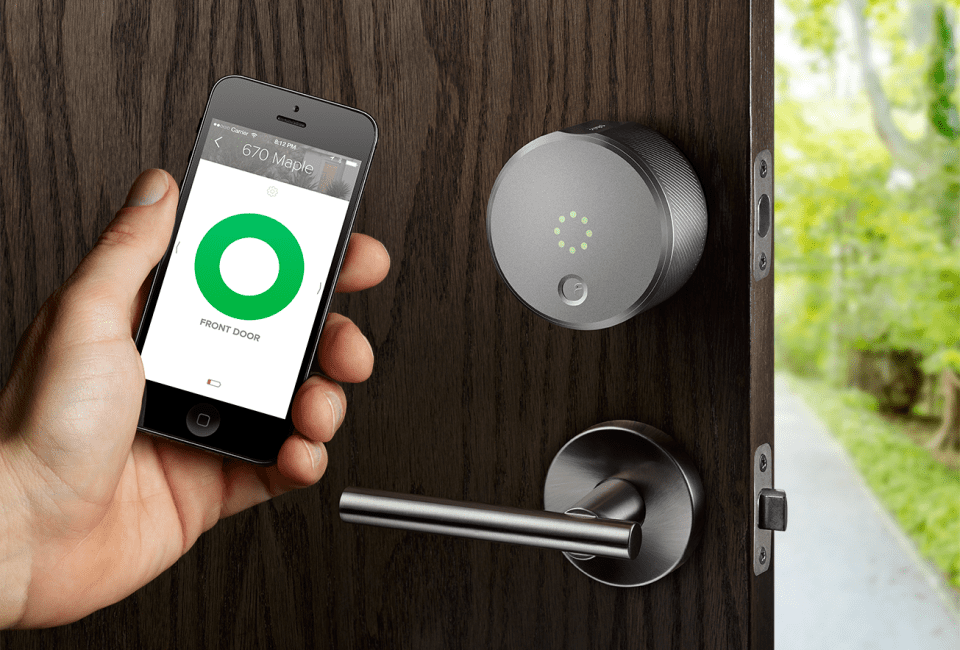
Image Source : Homecrux.com
5. Skully, Connected Motorcycle Helmet
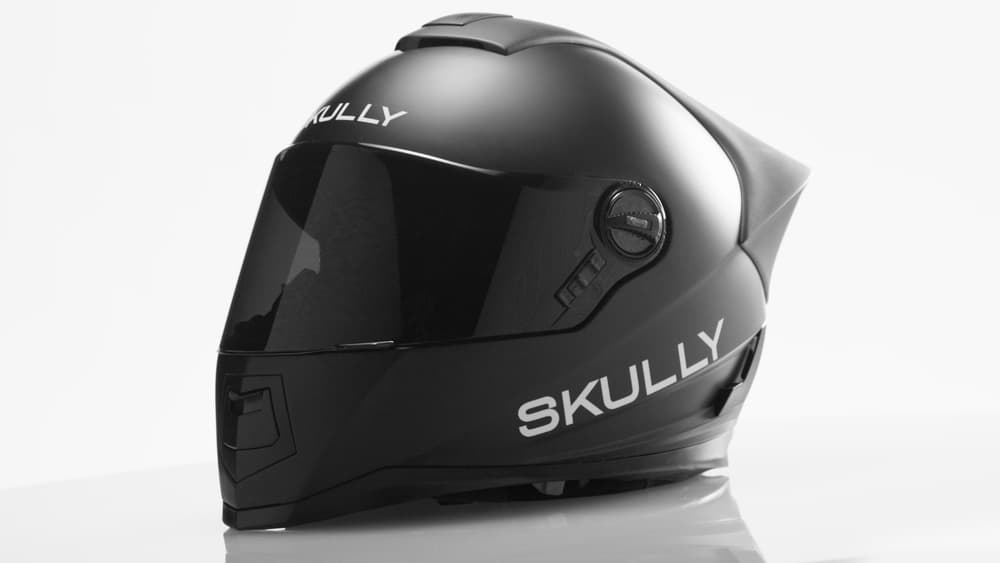
Image Source : blogs-images.forbes.com
Skully is a startup, which offers one of the best helmets (having the same name as the company’s) in its class. This device is a novel new helmet idea that draws upon inspiration from the pursuit of making travel by motorcycle safer. A smart helmet designed to protect motorcyclists’, the Skully AR-1 comes packed with an array of features! The main uses and highlights are:
- HUD display with access to crowdsourced maps
- GPS system and guidance.
- Voice commands and navigation
- Rear camera whose feed is available in the HUD
- Music streaming on the move
- Calling facility, Hands-free
“Infinite Focus” an attribute of the heads-up display makes it feel as if the displayed items are floating in the distance. The transparent display of the helmet shows turn by turn directions via GPS. The rear camera feed is present on the right side bottom of the visor. It can be adjusted according to different riding positions. This video camera allows for an 180-degree vision behind our back while riding. When the helmet is paired with the right bike, it can also show the vehicle speed, gear in use, RPM and other such indicators. The AR-1 has the added advantage of being able to save maps. We can save maps beforehand and load it during our travel without any access to the internet. Other features like real-time map updates with traffic status are also available.
The Future of IOT
We have come a long way from 1982 with just 1 IoT device for the whole human population. Take a look at the top ‘10 countries by IoT devices online per 100 inhabitants’ published by OECD in 2015

That IoT is going to impact our lives in a major way can no longer be in doubt. It may so become that, power companies may remotely read the meters indicating power consumption levels, Smart homes may take care of our every needs from ventilation, temperature control security to even ordering new utilities when needed.
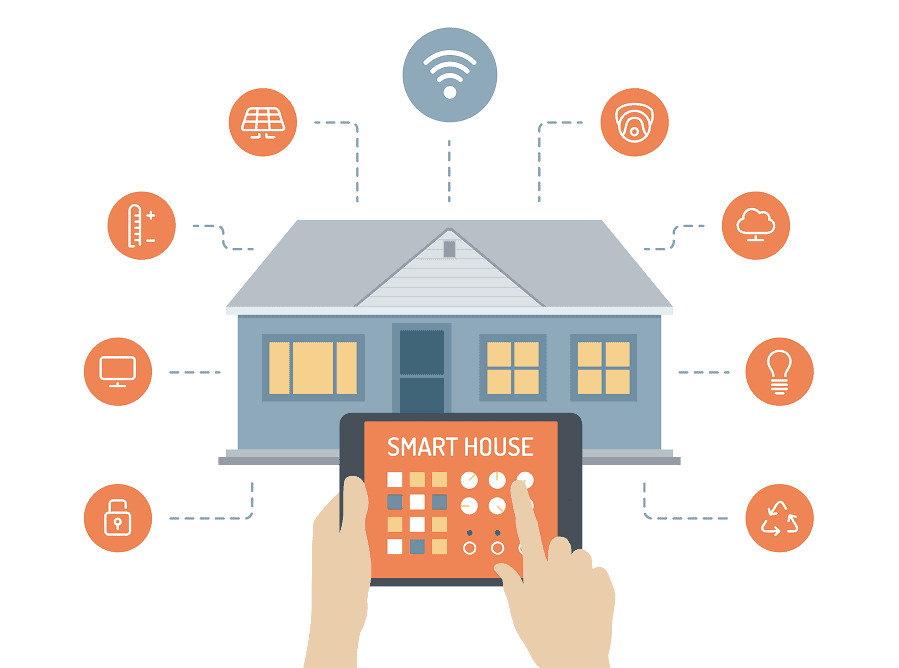
Source: rethink-iot.com
The future of IoT seems certain. It will be implemented in almost all the spheres of our life. The technology that it will bring to us would be personal and tailor made to our needs, knowing us and predicting our requirements before hand. No longer would Iron Man be the only owner of a smart personal assistant but so would be, a million other human beings. The stuff of science fiction would finally unfold in the settings of everyday life.
